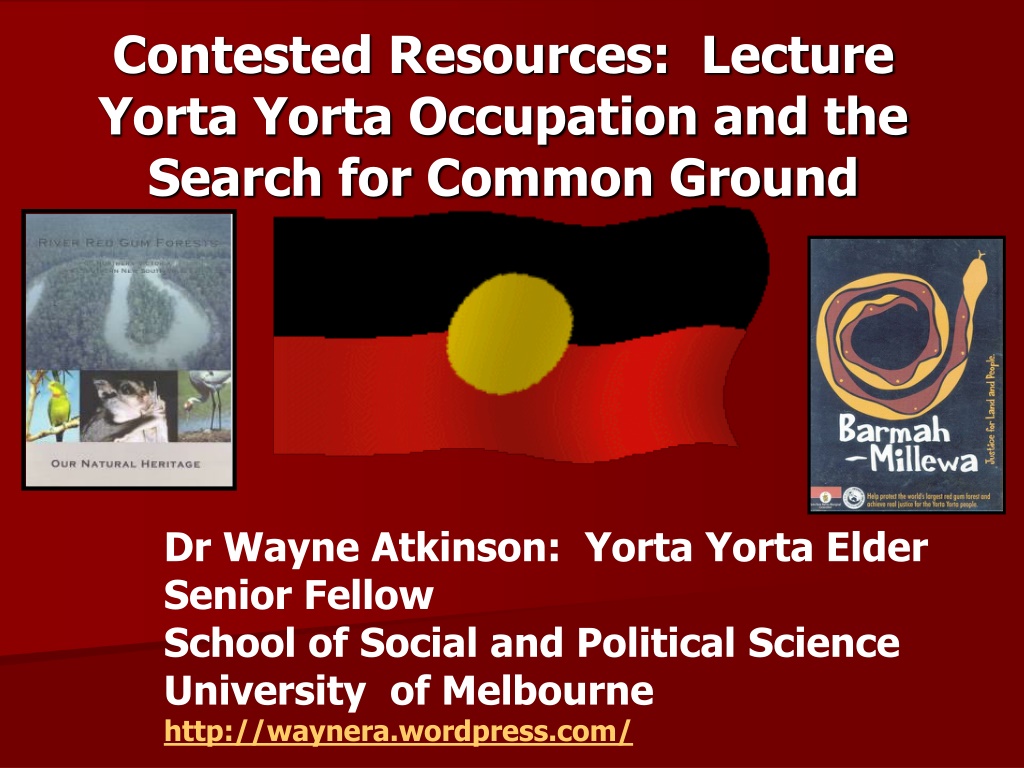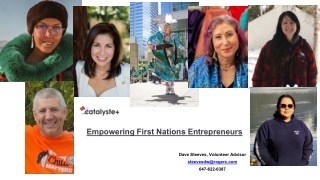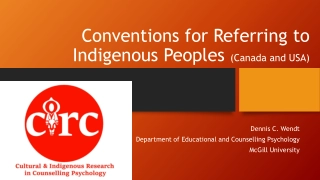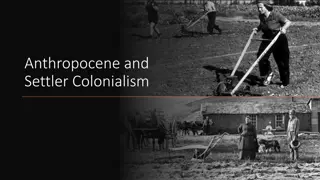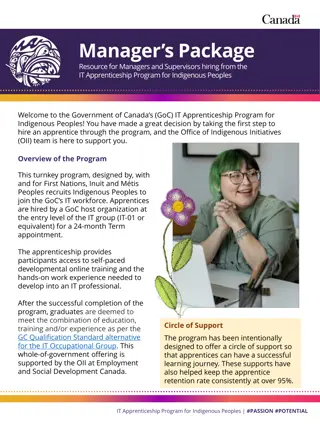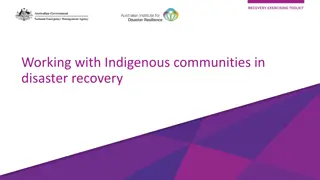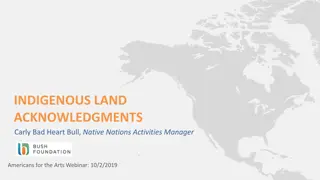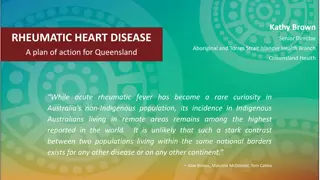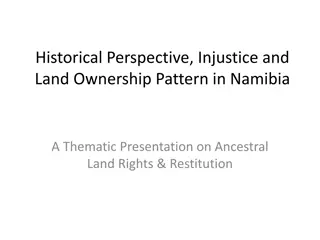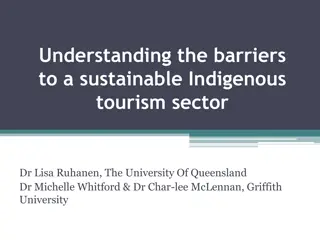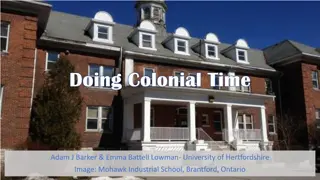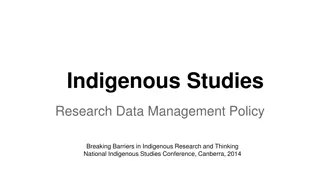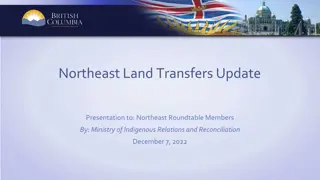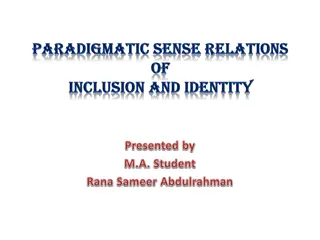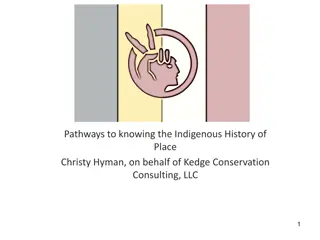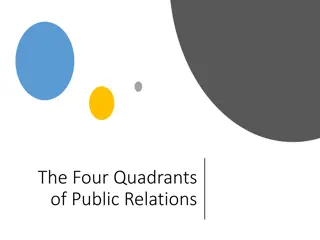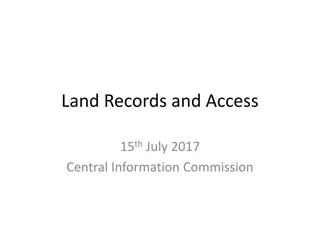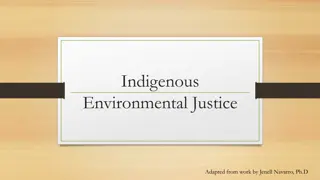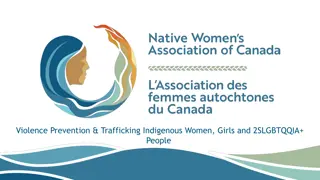Understanding Indigenous Culture and Land Relations: Yorta Yorta Perspective
Exploring the Yorta Yorta occupation of Barmah-Millewa Forest Wetlands, their commitment to protecting ancestral lands, the significance of joint management, and the preservation of natural and cultural values in the face of historical challenges and changes.
Download Presentation

Please find below an Image/Link to download the presentation.
The content on the website is provided AS IS for your information and personal use only. It may not be sold, licensed, or shared on other websites without obtaining consent from the author. Download presentation by click this link. If you encounter any issues during the download, it is possible that the publisher has removed the file from their server.
E N D
Presentation Transcript
Contested Resources: Lecture Yorta Yorta Occupation and the Search for Common Ground Dr Wayne Atkinson: Yorta Yorta Elder Senior Fellow School of Social and Political Science University of Melbourne http://waynera.wordpress.com/
Key Factors to understanding Indigenous Culture & Land Relations 1. Aboriginal culture in its proper time perspective-past & present as one. 2. The concept of change adaption & continuity- an evolving process familiar to all cultural groups 3. The existence of an ongoing-living culture that has survived & continues to maintain its identity & connections with the ancestral lands
Yorta Yorta Occupation of Barmah- Millewa Forest Wetlands B-M is in the heartland of Yorta Yorta Nation-Ancestral Land & Waters Yorta Yorta committed to protecting Forest Welands-is the keeping place of their cultural heritage. Joint Management under handback/leaseback of Barmah-Millewa will ensure continuity of natural & cultural values.
Ramsar Convention & China, Japan Migratory Bird Agreements (Ramsar comes under UNESCO which is a specialised agency of the UN System Barmah Moira Lakes, protected under Ramsar Convention (The signing of the Convention took place in 1971 in the small Iranian town of Ramsar (since then, it has taken the common name of the Ramsar Convention). White Breasted Sea Eagle China & Japan Migratory Birds Agreement: (CAMBA,1986 & JAMBA,1974,) Agreement on international cooperation for the conservation of migratory species & for the protection of specific habitats. Great Egret & White-bellied Sea-eagle (two birds BM listed). Great Egret Japan, 2008 Other birds are Rainbow Bee-eater, Cattle Egret, Greenshank, Glossy Ibis, White- throated Needletail, Sharp-tailed Sandpiper, Latham's Snipe, Red-necked Stint, Fork- tailed Swift and Caspian Tern (DCE 1992).
Yorta Yorta Occupation Timeline & Evidence of prior occupation
Timeline & Indigenous Survival Last two centuries (non-Indigenous occupation) dominates the timeline & the intensity of change that has taken place. Adaption, cultural continuity & survival, is outcome that needs to be recognised. Factoring the track record of land management and care into Joint Management today.
Stratigraphy(timeline) of Occupation Sites Mounds & Middens Recent Oldest Timeline of Occupation
Mound Sites: Barmah State Park Mound Mound Lagoon& Natural Food Storage System, Barmah Forest
Indigenous Land Management A Holistic view of the relationship between Land and Natural Resource Management.
Holistic View of Land Management & Care Indigenous wisdom throughout the world shares a common belief system that all things are related . What happens in one area sooner or later directly or indirectly impacts on other areas. The history of imported land uses vindicates this view Yorta Yorta have a long tradition of caring for forest. They see the forest & all of its encompassing features (including all living entities) from a holistic viewpoint . (Yorta Yorta Nations Inc, 1990).
Campaign for National Park & Joint Management: Contested Resources
Key Issues of Contestation Adapting management practices to Indigenous philosophy of land and water management without compromising track record of land management Tapping into the tourism economy to generate an economic base for local communities. Promoting education and training through education and cultural awareness
Key Issues (cont)- Contribution of Indigenous knowledge to current land management practices-is it being given due recognition in YYTOJMB? Inclusion of Indigenous people in land management and care. Are Indigenous people employed in all levels of management including senior decision making level? Joint management structures working successfully in Australia-Kakadu, Ulluru, Boodaree,(Wreck Bay ACT).
PATHWAYS FOR FUTURE A negotiated settlement between government & other parties, which recognises the Yorta Yorta as the traditional owners under a handback/leaseback arrangement and inalienable freehold title (see Models of Structures for Joint Management of NP s in current BM Campaign research, 2004).
Keeping it for the Future Old Dhungulla: Keep Her Flowin & Keep the River Reds Growin Yorta Yorta Woka & Maranooka, Thank you
